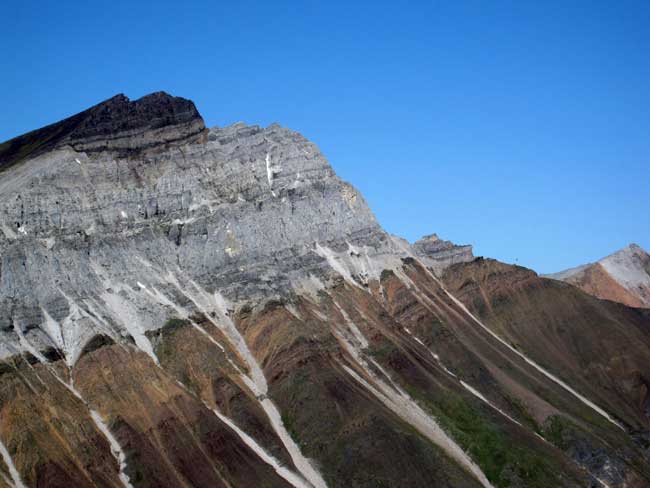Ice Once Covered the Equator

Sea ice may have covered the Earth's surface all the way to the equator hundreds of millions of years ago, a new study finds, adding more evidence to the theory that a "snowball Earth" once existed.
The finding, detailed in the March 5 issue of the journal Science, also has implications for the survival and evolution of life on Earth through this bitter ice age.
Geologists found evidence that tropical areas were once covered by glaciers by examining ancient tropical rocks that are now found in remote northwestern Canada. These rocks have moved because the Earth's surface, and the rocks on it, are in constant motion, pushed around by the roiling currents of the planet's interior, a process called plate tectonics).
The rocks from Canada's Yukon Territory showed glacial deposits and other signs of glaciation, such as striated clasts, ice-rafted debris, and deformation of soft sediments.
The scientists were able to determine, based on the magnetism and composition of these rocks, that 716.5 million years ago the rocks were located at sea-level in the tropics, at about 10 degrees latitude. The period of glaciations that occurred then is called Sturtian glaciation, one of the two greatest ice ages known to have taken place on Earth.
"This is the first time that the Sturtian glaciation has been shown to have occurred at tropical latitudes, providing direct evidence that this particular glaciation was a 'snowball Earth' event," said lead author of the study Francis Macdonald, a geologist at Harvard University.
"Our data also suggest that the Sturtian glaciation lasted a minimum of five million years," Macdonald added.
Sign up for the Live Science daily newsletter now
Get the world’s most fascinating discoveries delivered straight to your inbox.
One intriguing question suggested by the finding is how life forms — particularly those more complex than microbes — survived throughout this harsh climate. Their survival suggests that sunlight and surface water remained available somewhere on Earth's surface, perhaps in patches of open water that formed in the sea ice and provided a refuge for life.
"The fossil record suggests that all of the major eukaryotic groups, with the possible exception of animals, existed before the Sturtian glaciation," Macdonald said. "The questions that arise from this are: If a snowball Earth existed, how did these eukaryotes survive? Did the Sturtian snowball Earth stimulate evolution and the origin of animals?" (Eukaryotes have a true nucleus and are more complex than so-called prokaryotes.)
"From an evolutionary perspective," he added, "it's not always a bad thing for life on Earth to face severe stress."
Scientists don't know exactly what caused this glaciation or what ended it, but Macdonald says its age of 716.5 million years closely matches the age of a large igneous province -- made up of rocks formed by magma that has cooled -- stretching more than 932 miles (1,500 kilometers) from Alaska to Ellesmere Island in far northeastern Canada.
This coincidence could mean the glaciation was either precipitated or terminated by volcanic activity.
The work was supported by the National Science Foundation and the Polar Continental Shelf Project.
- 101 Amazing Earth Facts
- Big Freeze: Earth Could Plunge into Sudden Ice Age
- Quiz: Global Weather Extremes











